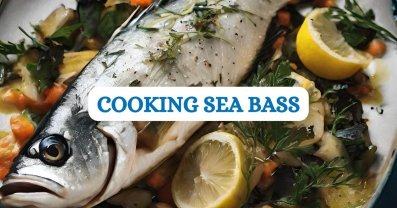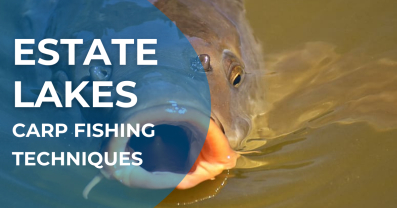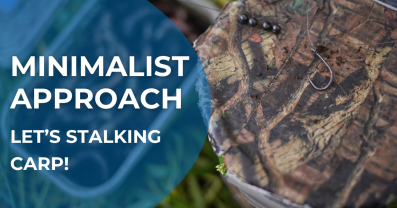The best pop-up rigs for carp fishing
Floating snaps have long been proven to be effective and represent a huge section for discussion. However, to get the best effect, it is necessary to understand exactly where and when they should be used.
Floating rigs raise the tip above the surface of the bottom, making them ideal for fishing in deep mud, algae and bottom debris. They also help to visually distinguish the nozzle from the surrounding environment, the design of which allows you to accurately catch the carp by the lower lip.
And, of course, a nozzle with a high level of buoyancy is a mandatory element of pop-up rigs for catching carp. Over the years of development of carp fishing, a decent number of floating rigs have been born, in this section we will analyze some of the most interesting ones so that you have an idea of the basic principles of their work.
Chod-rig and Hinged Stiff Rig
Probably, you have heard about the chod and its properties, but we will still quickly walk through this unique equipment. We've also combined it into the same section as Hinged Stiff, as they are similar in many ways. The leash that rises above the surface of the floating nozzle is identical in both rigs. The Chod-rig was originally created as an omnivorous rig suitable for any situation.
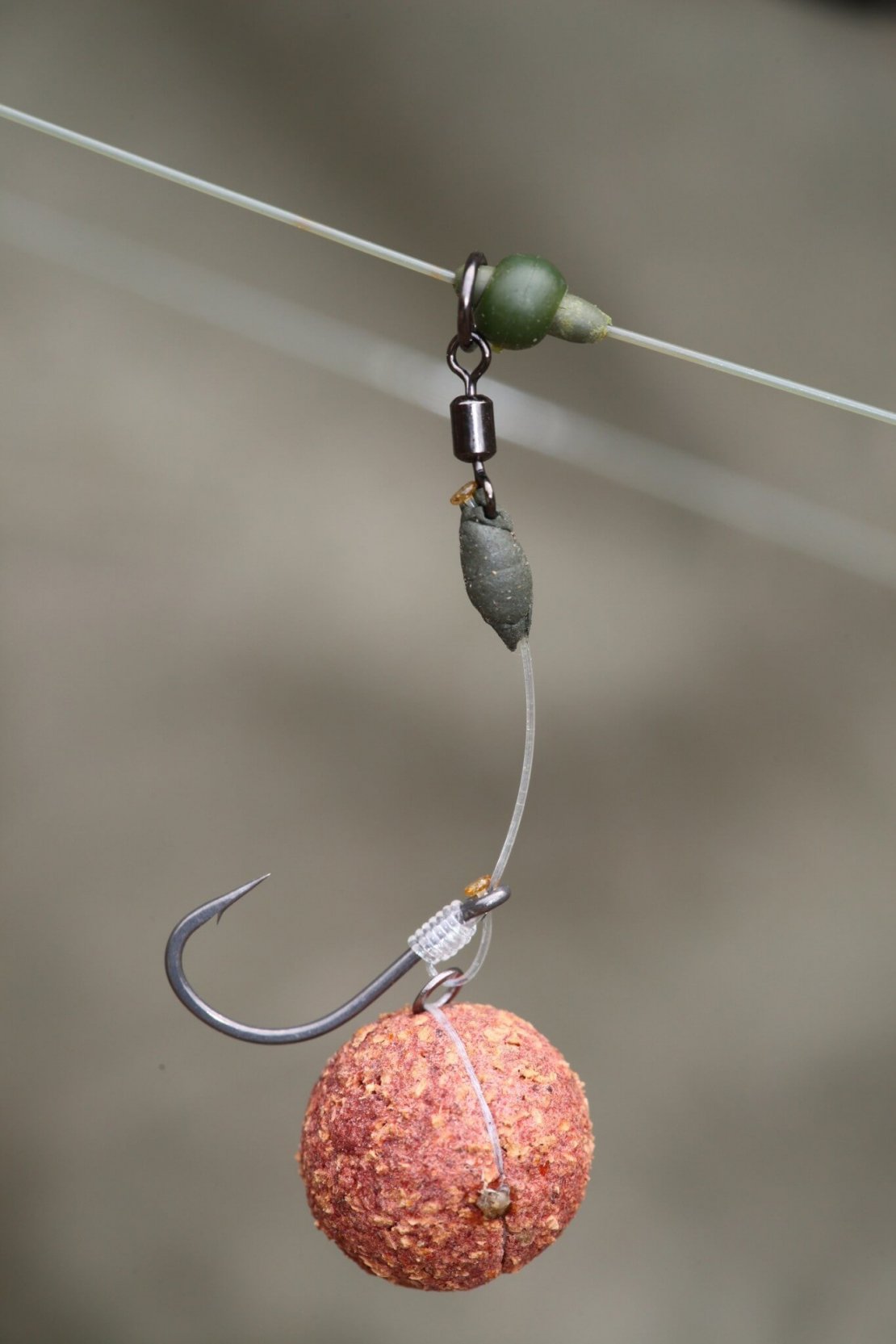
Over time, it became clear that it brilliantly copes with difficult areas of the reservoir, where it is impossible to qualitatively imagine other equipment (algae, deep silt). The main principle of the equipment is a sliding (or fixed) hard leash 6-9cm long on the ice core or main line with a pop-up on the 'D' loop.
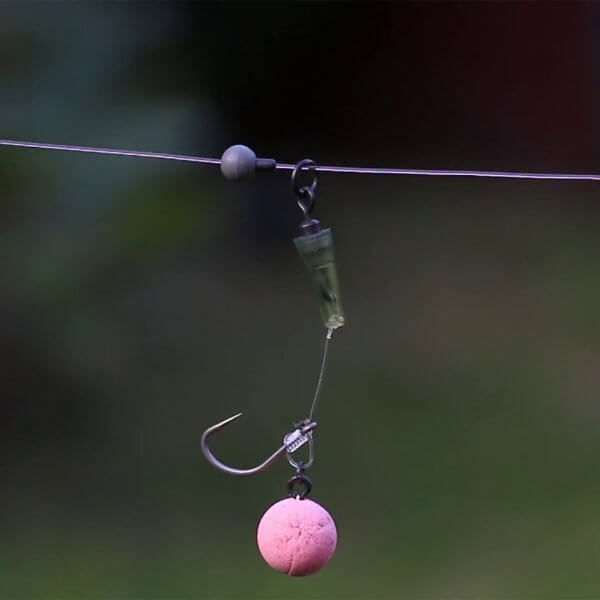
What exactly is needed
To create equipment, we will need:
- chod-style hook (with an eye on the outside)
- rigid leash material (fluorocarbon or "high memory" mono)
- carousel with a ring
- one or two stoppers to limit the sliding of the leash on the fishing line. There are also several ways to fix the nozzle on the hook loop: rings, mini swivels, nozzle screws, loops.
Instruction
- We tie the hook with a knotless knot (3-7 turns), put it on the ring (or another device for fixing the nozzle) and stretch the already equipped hair into the eye of the hook, forming a loop on the back of the thread.
- We cut off the excess segment and burn the material until a locking ball is formed.
- We choose the length of the leash (6-9 cm) and tie the end with a double bloody knot to the swivel with a ring.
- We give a slight curve to the leash above the steam so that it resembles a claw.
The equipment is ready.
We put on the chod for the installation of the helicopter, install the stopper on the fishing line or ice core, measuring the distance along which the equipment can slide. Or you can fix the leash in a certain position with two stoppers. If you do not use a lead core, then you need to weight the base of the leash so that the snap slides more easily on the fishing line. To do this, simply add tungsten paste around the swivel.
Fishing tactics on Chod-rig
An important aspect of fishing for chog-rig is feeding tactics. It is necessary to understand that, as a rule, a floating boilie with a diameter of 15 mm or more acts as a nozzle for a chod-rig. Carp fishing for boilies can be conditionally divided into two tactics: scattering boilies or spot baiting. The first option is more suitable for Chod-Rig.
The tactic of spreading boilies involves the attraction of floating fish and the capture of fish already involved in the water area. For this, you should use a cobra, with which you need to scatter boilies in your fishing area. You will make the carp move a lot and pick up single boilies, among which your nozzle will appear. The tactic is aimed at trophy carp, because the use of only boilies allows you to cut off small fish.
From Chod rig to Hinged Stiff Rig
To convert a chod-rig into a Hinged Stiff Rig, you only need to add a part of the leash that will lie on the bottom, and shorten the part of the leash that floats to 3-4 cm.
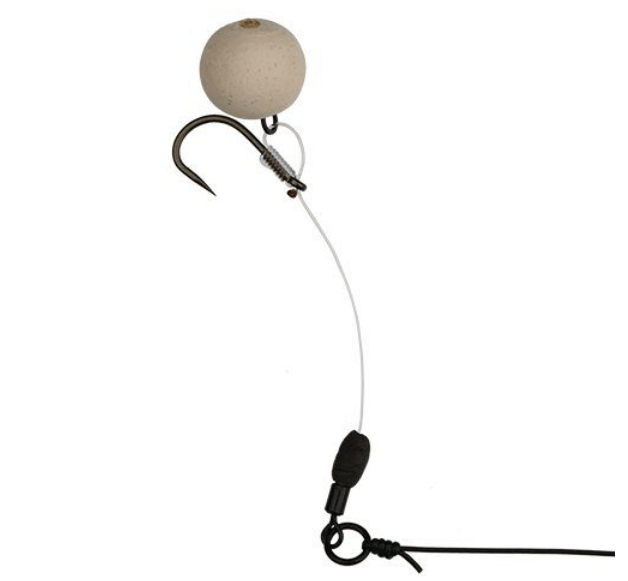
The material for the sinking part of the leash can be the identical fluorocarbon of the chod, mono or braided material in the shell. Usually, the sinking leash is connected to the main assembly and the floating part with the help of loops, and its length exceeds the floating leash by 3-4 times.
Multi Rig
The equipment is quickly gaining popularity among modern carp fishers. She is trusted by many professional falconers, including John McAllister.
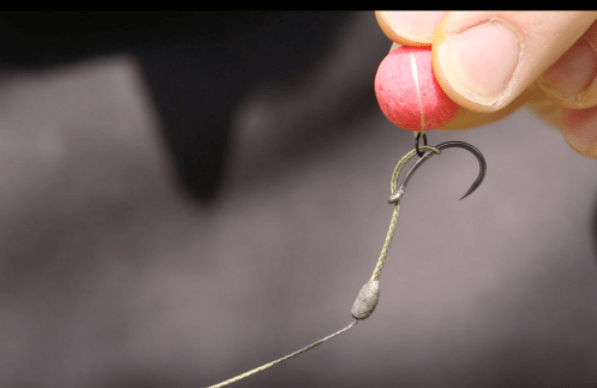
The reason is simple - the Multi-rig consists of several basic parts, is obscenely easy to knit and, most importantly, catches carp perfectly. The rigging works best with floating boilies, although some use rigging when fishing from the bottom.
How to create and connect a Multi-rig
We need:
- Take the braided material in the shell of medium hardness
- Make a loop of about 3-5 cm (this will be the length of the floating part of the leash)
- Tie a simple knot at the base of the loop.
- Next, we thread our loop into the eye of the chod style hook from the inside, add a attachment to the loop to secure the attachment (swivel, ring swivel, or just a ring) and then slip the hook itself to form a large 'D' loop (as in the photo below).
- At the base of the loop node, we remove 2-3 mm of the shell so that the equipment can be easily deployed, and further, behind the exposed area, we add a pellet or tungsten paste to hold the floating area.
- We choose the length of the main part of the leash (10-20 cm) and tie it to the desired installation. The multi-rig is combined with a safety clip, helicopter, inline. As you can see, there is no need to knit a knot to connect the hook, so you can change the hook in a couple of seconds.
It is important to remember that the professional partridge John McAllister played a huge role in the popularization of the tool.
Withy Pool
You should not be afraid of the appearance of this equipment, because any other installation will be jealous of its coefficient of detection.

The "Vivy Pool" was first used by Steve Ranyard when he was hunting a neat and big carp. As it turned out, all the montages failed, but at first glance, this montage helped him catch the coveted trophies. Twenty years have passed since then, and the equipment has found its supporters, although there are not as many of them as we would like.
Key elements of the Withy Pool
As you can see, the key detail is the long, curved, claw-like heat shrink section (about 5cm). It guarantees the perfect installation of the equipment (you can forget about the confusion of the installation), and also plays an important role in the incredible ratio of the carp lip. In addition, after impregnation of the sting in the lip, the fish will not go anywhere. I would like to note right away that if you do not want to mess with heat shrink, ready-made molds for any taste are sold.
Another important factor is the hook. We recommend using a model with a straight stinger and eye, as in the example photo above. Additional bends of the hook will only harm the mechanics of the equipment. The particle at the base of the heat shrink balances the buoyancy of the nozzle. We also recommend using braided leash material in a soft shell. Be sure to remove about 1 centimeter behind the base of the heat shrink so that the snap can be easily deployed.
Other aspects: it is better to tie the hook with a greener knot. To limit the nozzle from sliding, you should put a stopper on the tip opposite the stinger.
In the end, I would like to emphasize: do not make hasty conclusions based on the appearance, try the tool and then you will understand why it is so effective.
Spinner rig
In recent years, this equipment has gained incredible popularity, because it allows you to completely forget about the danger of an unsuccessful presentation. It is always located in a combat position and can be actively used not only with floating equipment, but also with sinking equipment. One of the most versatile leashes you can think of today!
Conclusion
In conclusion, using pop-up rigs is an effective way to catch more carp. By presenting your bait in a way that's hard to resist, you'll increase your chances of getting a bite. Remember to experiment with different rig setups and baits to find what works best for you and the carp in your area. Keep in mind the water depth, temperature, and weather conditions when selecting your rig setup. Also, make sure to practice proper rig tying techniques to ensure your rig stays intact during casting and while in the water. With a little patience and persistence, you'll soon be reeling in big carp with your expertly crafted pop-up rig. Happy fishing!

